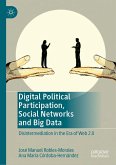This book explores in detail new protest organisation and mobilisation strategies of young activists in the digital age with the aim to identify the tactics that worked well against those creating high risks in the context of digitally supported protests. Focusing on Egyptian protests as well as peaceful protests in Syria, the book offers rich and unique data as it brings together the experiences and voices of the key figures involved in the protests, both on the ground and online. It challenges perspectives that defined the Arab uprisings as leaderless movements formed through the non-hierarchical communication of digital technologies. The author presents three kinds of leaders that shape the political communication environment in digitally supported protests and highlights the significance of their leadership skills to the movements' capacities.
"Leading Protests in the Digital Age provides an efficient resource for readers, especially those interested in the Arab Spring uprisings. ... the study is a useful resource for readers from different disciplines such as journalism, sociology and political science, and academics working on the Syrian refugee issue." (Merve Sentöregil, Insight Turkey, Vol. 22 (1), 2020)








